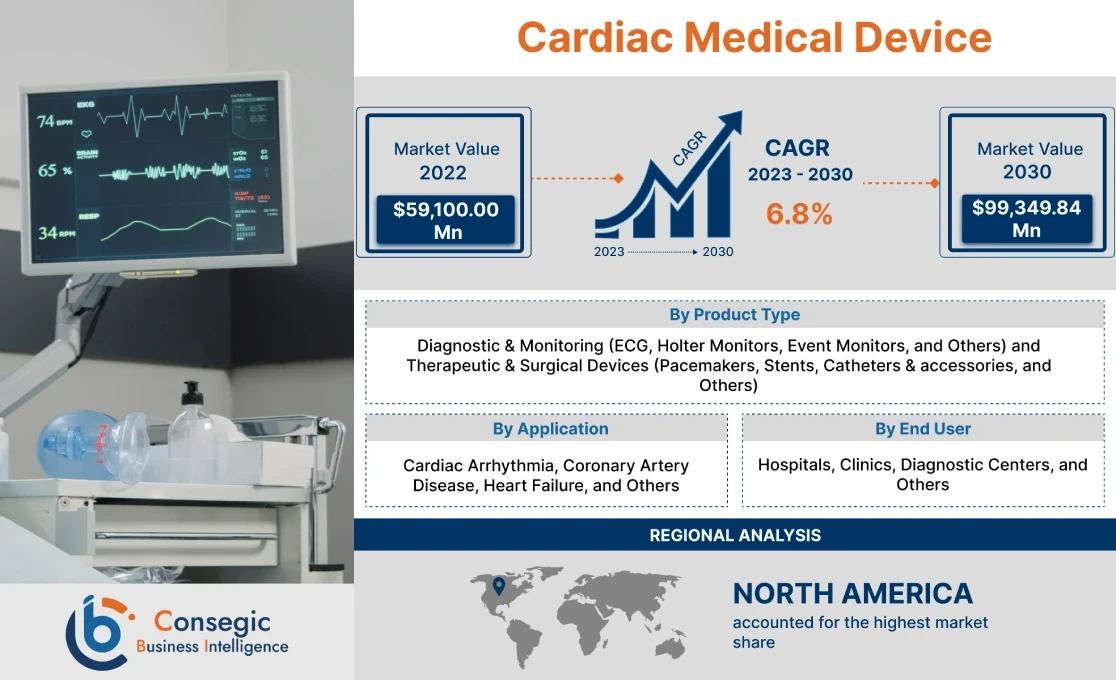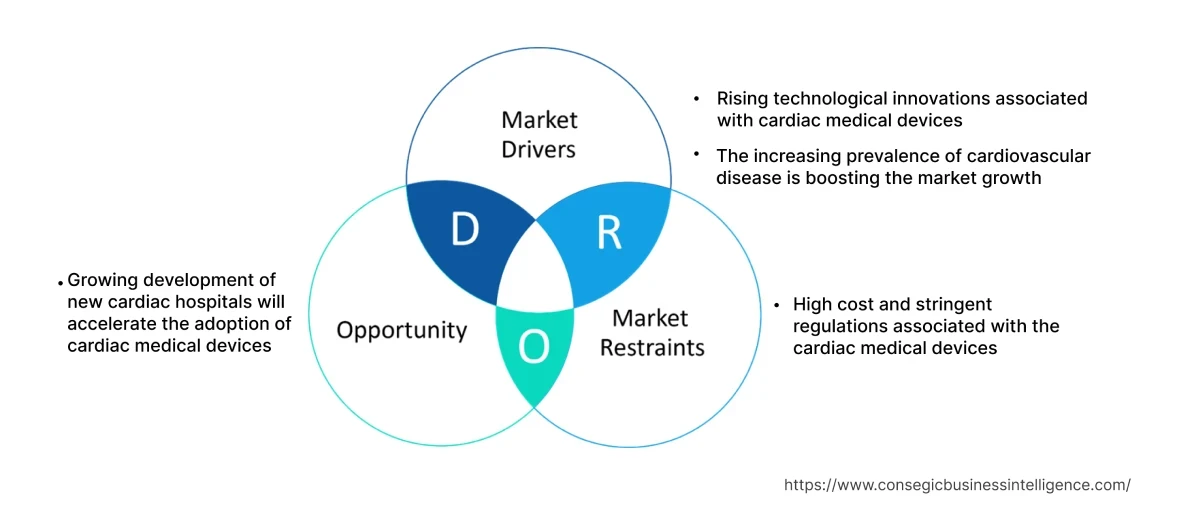Cardiac Medical Device Market Size:
Cardiac Medical Device Market size is estimated to reach over USD 104.02 Billion by 2032 from a value of USD 63.65 Billion in 2024 and is projected to grow by USD 66.58 Billion in 2025, growing at a CAGR of 6.86% from 2025 to 2032.
Cardiac Medical Device Market Scope & Overview:
Cardiac medical devices are designed to diagnose, monitor, and treat heart conditions, including irregular heartbeats and heart failure. Also, the key advantages of the device include improved heart function, enhanced patient care, improved quality of life, among others are driving the cardiac medical device market demand. Additionally, the device allows for remote monitoring, where data is transmitted wirelessly to healthcare providers, enabling timely interventions and follow-up, which in turn is boosting the cardiac medical device market growth. Further, the increasing frequency of cardiovascular disease is driving the cardiac medical device industry.
Cardiac Medical Device Market Dynamics - (DRO) :
Key Drivers:
Technological Advancement in Devices is Boosting Market Growth for Cardiac Medical Devices
Technological advancements have led to the development of smaller, more sophisticated devices that are driving the cardiac medical device market growth. Additionally, the rise of remote patient monitoring devices, such as wearable sensors and connected pacemakers, is boosting the cardiac medical device market demand. Further, AI and ML are integrated into devices to enable remote patient monitoring capabilities as well as to improve diagnostic accuracy, and others are boosting the market.
- For instance, in February 2022, Ceryx Medical Limited partnered with the Universities of Bath, Bristol, and Auckland Bioengineering Institute (ABI) for the development of technologically advanced cardiac devices, aiming to enhance the outlook for patients with serious heart conditions.
Therefore, technological advancements are driving the adoption of devices, in turn, proliferating the growth of the market.
Key Restraints:
High Cost and Operational Limitations are Restraining the Market Growth
The design, development, and manufacturing of advanced cardiac devices require significant investment, which in turn hinders the cardiac medical device market expansion. Additionally, the malfunction of the device leads to serious health problems such as dizziness, fainting, and even cardiac arrest, which in turn is restraining the market adoption.
Therefore, the high costs and operational limitations are hindering the cardiac medical device market expansion.
Future Opportunities :
Expanding Healthcare Infrastructure is Expected to Promote Potential Opportunities for Market Growth
Expanding Healthcare Infrastructure is Expected to Promote Potential Opportunities for Market Growth
The increasing number of people affected by cardiovascular diseases globally is driving the need for expanding healthcare infrastructure industry, which in turn is paving the way for cardiac medical device market opportunities. Additionally, rising government initiatives and advancements in medical technology are propelling the market's progress. Further, the increasing investment in advanced medical devices is creating a need for cardiac devices.
- For instance, in May 2025, GE HealthCare launched AltiX AI.i for Mac-Lab, CardioLab, and ComboLab are designed to improve the user experience, elevating workflow in the cath lab and supporting even the most complex electrophysiology (EP) procedures.
Hence, the expanding healthcare infrastructure is anticipated to increase the utilization, in turn promoting prospects for cardiac medical device market opportunities during the forecast period.
Cardiac Medical Device Market Segmental Analysis :
By Product Type :
Based on the product type, the market is bifurcated into diagnostic & monitoring and therapeutic & surgical devices.
Trends in the Product Type:
- The revolution of personalized implants, prosthetics, and surgical instruments is driving the adoption of 3D printing in therapeutic & surgical devices, which in turn is boosting the cardiac medical device market trends.
- The proliferation of minimally invasive procedures is driving the diagnostic & monitoring segment, which in turn is boosting the cardiac medical device market trends.
Therapeutic & Surgical Devices accounted for the largest revenue share in the year 2024.
- The devices are primarily used for cardiac treatment to ensure efficient correction and regulation of an abnormal heart rhythm.
- Additionally, the development of advanced technologies is propelling the adoption of therapeutic & surgical devices, which in turn is boosting the cardiac medical device market share.
- Further, the increasing prevalence of cardiovascular diseases (CVDs) and the aging global population are driving the demand for therapeutic & surgical devices, which in turn is boosting the cardiac medical device market share.
- For instance, in May 2023, Shockwave Medical, Inc. launched Shockwave C2+ Coronary Intravascular Lithotripsy (IVL) Catheter designed for the treatment of calcified coronary artery disease.
- Thus, according to the cardiac medical device market analysis, the increasing prevalence of cardiovascular diseases (CVDs) and the aging global population are driving the market progress.
Diagnostic & Monitoring is anticipated to register the fastest CAGR during the forecast period.
- The prevalence of chronic diseases such as diabetes, cardiovascular disease, and cancer increases, creating a higher demand for diagnostic tools and monitoring systems.
- Additionally, the rising adoption of advanced imaging tools, robotics, and wearable technology for better diagnosis & monitoring boosts the cardiac medical device market size.
- Further, the growing adoption of remote patient monitoring systems and telehealth technologies is driving the need for diagnostic & monitoring devices, which in turn boosts the cardiac medical device market size.
- Therefore, as per the market analysis, the growing adoption of remote patient monitoring systems and telehealth technologies is anticipated to boost the market during the forecast period.
By Application:
Based on the application, the market is segmented into cardiac arrhythmia, coronary artery disease, heart failure, and others.
Trends in the Application:
- The trend towards the prevalence of AI-powered diagnostics tools to improve risk assessment and treatment planning for coronary artery disease (CAD) is driving the market progress.
- The trend towards rising adoption of left ventricular assist devices designed for refractory heart failure is propelling the adoption in heart failure applications.
Coronary Artery Disease accounted for the largest revenue share in the year 2024.
- Devices such as cardiac imaging equipment are crucial for early and accurate diagnosis of coronary artery disease (CAD).
- Additionally, advances in technology allow for remote monitoring of patients with CAD, improving access to care and potentially reducing the need for frequent hospital visits.
- Further, the key factor driving the market adoption is due to the prevalence of sedentary lifestyles, poor dietary habits, and obesity, which in turn are major contributors to the development of CAD.
- For instance, according to the U.S. Department of Health & Human Services, coronary heart disease killed approximately 382,820 people in 2020, which in turn is driving the market adoption.
- Thus, according to the cardiac medical device market analysis, the prevalence of sedentary lifestyles, poor dietary habits, and obesity is driving the market adoption.
Heart Failure is anticipated to register the fastest CAGR during the forecast period.
- The increasing prevalence of high low-density lipoprotein (LDL) cholesterol, high blood pressure, and diabetes, among others, is driving the market adoption for heart failure applications.
- Additionally, the increasing incidence of heart failure is driving the market adoption.
- Further, the advancements in both drug therapies and medical devices are boosting the market adoption for heart failure applications.
- Therefore, as per the market analysis, the increasing incidents of heart failure are anticipated to boost the market during the forecast period.
By End User:
Based on the end user, the market is segmented into hospitals, clinics, diagnostic centers, and others.
Trends in the End User:
- The trend towards the rise of personalized medicine, the integration of digital health technologies, is driving the market adoption in hospitals.
- The trend towards rising adoption of devices that are becoming increasingly miniaturized, improving patient comfort, access, and overall device usability, which in turn is driving their adoption in diagnostic centers.
The hospital accounted for the largest revenue share in the year 2024.
- The growing global focus on healthcare expenditure is driving the market adoption in hospitals.
- Additionally, the aging populations and rising obesity rates contribute to the increased demand for cardiac devices.
- Further, innovations such as minimally invasive procedures, bioresorbable stents, and remote monitoring capabilities in cardiac devices are boosting the market adoption by hospitals.
- For instance, in February 2023, Victorian Heart Hospital (VHH) is a state-of-the-art heart disease treatment hospital specializing in the research and treatment of cardiac diseases launched in Australia.
- Thus, as per the market analysis, innovations such as minimally invasive procedures, bioresorbable stents, and remote monitoring capabilities are driving the market trends.
Diagnostic Centers is anticipated to register the fastest CAGR during the forecast period.
- The increasing focus on early diagnostic and prevention tools and techniques is driving the market adoption in diagnostic centers.
- Additionally, the rise in public awareness campaigns and initiatives aimed at promoting heart health and encouraging regular check-ups is boosting the need for diagnostic centers.
- Further, governments and healthcare organizations are investing in upgrading healthcare infrastructure and promoting the adoption of advanced medical technologies, which in turn is propelling the adoption in diagnostic centers.
- Therefore, as per the market analysis, the rise in public awareness campaigns and initiatives aimed at promoting heart health is anticipated to boost the growth of the market during the forecast period.
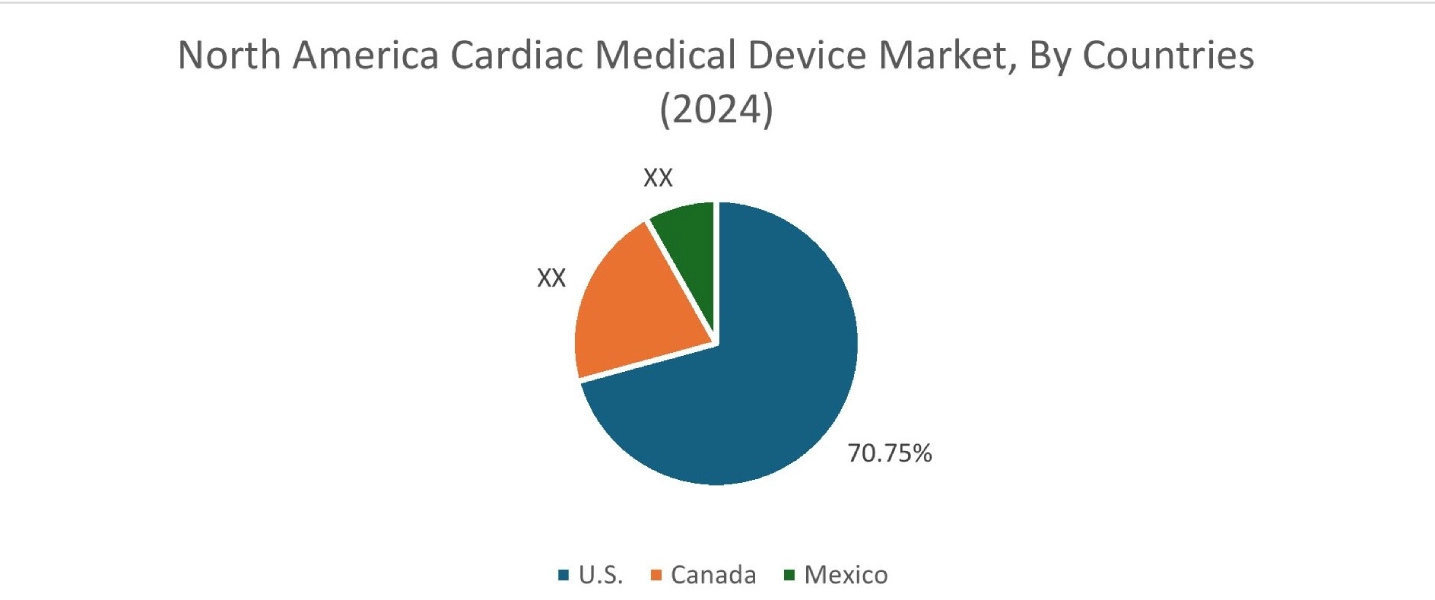
By Regional Analysis:
The regions covered are North America, Europe, Asia Pacific, Middle East and Africa, and Latin America.
North America is estimated to reach over USD 37.50 Billion by 2032 from a value of USD 22.79 Billion in 2024 and is projected to grow by USD 23.85 Billion in 2025. Out of this, U.S. accounted for the maximum revenue share of 70.75%. The North American region's high adoption rate of advanced devices and procedures like minimally invasive interventions offers lucrative growth prospects for the market. Additionally, the presence of a large number of hospitals equipped with innovative technology is driving the market's progress.
- For instance, in June 2025, GE HealthCare launched innovative molecular imaging solutions for cardiovascular disease. The advanced diagnostic technology plays a crucial role in cardiac care by providing detailed insights into biological processes beyond conventional imaging.
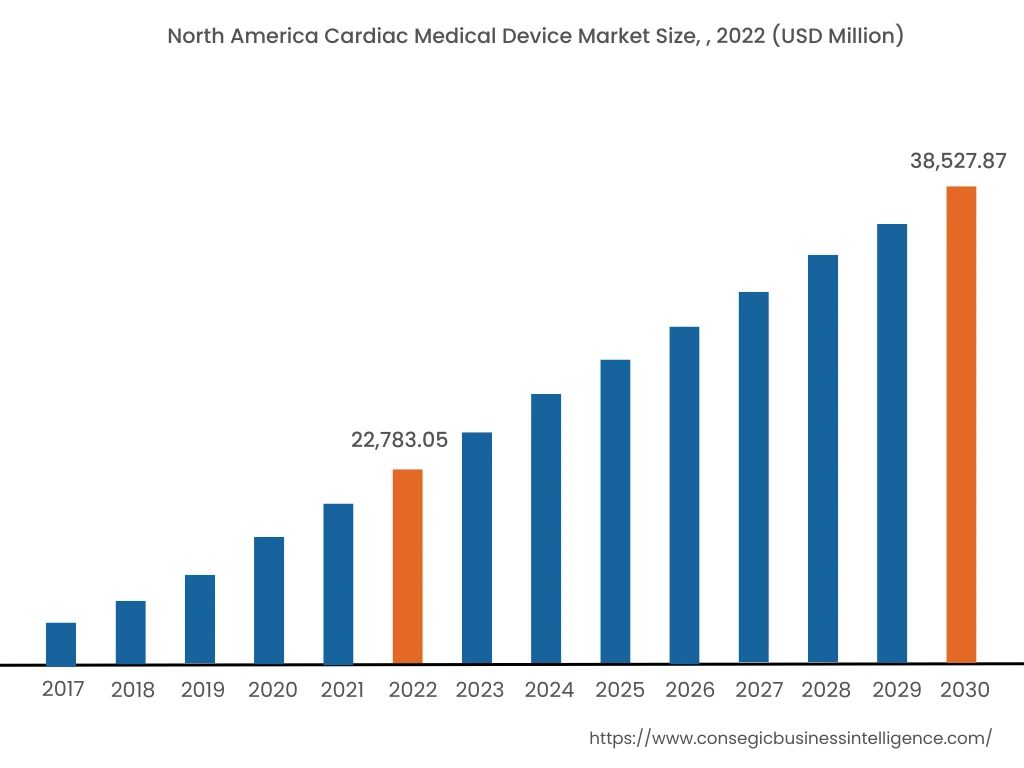
Asia Pacific region was valued at USD 16.36 Billion in 2024. Moreover, it is projected to grow by USD 17.15Billion in 2025 and reach over USD 27.44 Billion by 2032. The market progress is mainly driven by the growing demand for highly advanced cardiac devices. Furthermore, factors including the rising disposable incomes and government initiatives to improve healthcare access are projected to drive the market progress in the Asia Pacific region during the forecast period.
- For instance, in June 2025, Foldax launched Mitral Valve, approved by CDSCO, aiming to stabilize hemodynamics and achieve meaningful improvements in patient quality of life.
The regional analysis depicts that the shift towards minimally invasive procedures, remote patient monitoring, and others is driving the market in Europe. Additionally, the key factor driving the market is the rise in wearable and home-based monitoring devices, as well as the integration of IoT and AI in cardiac care is propelling the market adoption in the Middle East and African region. Further, the growing demand for advanced diagnostic and monitoring devices is paving the way for the progress of the market in the Latin American region.
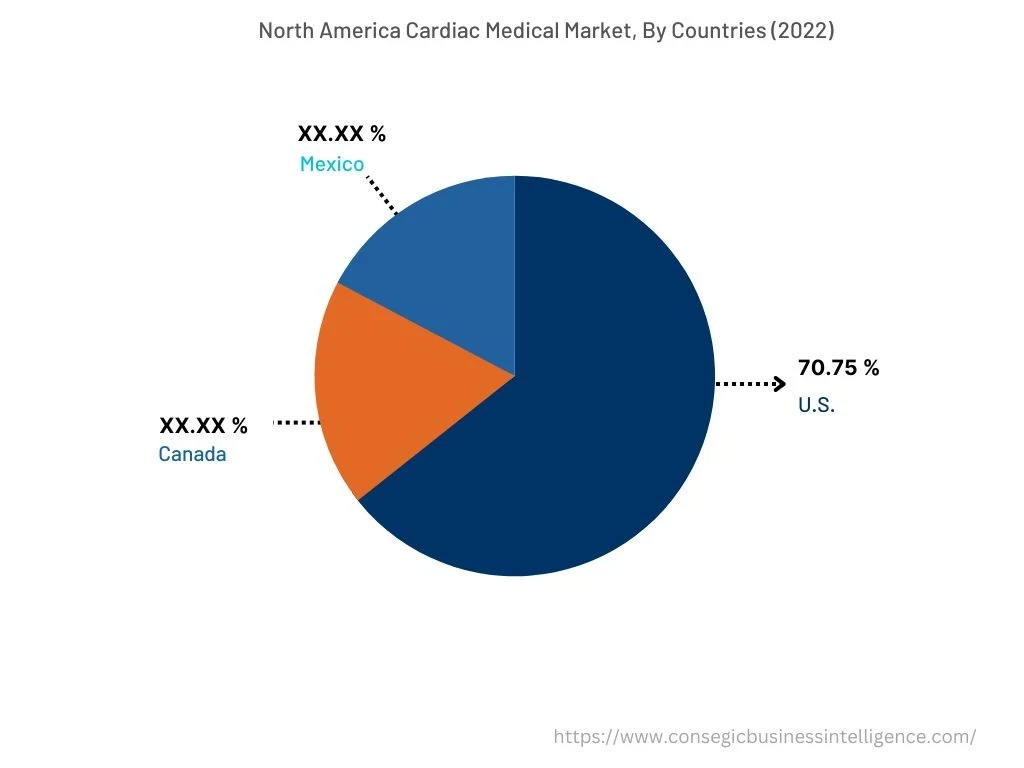
Top Key Players and Market Share Insights:
The baked savory snacks industry is highly competitive with major players providing solutions and services to the national and international markets. Key players are adopting several strategies in research and development (R&D), product innovation, and end-user launches to hold a strong position in the global Cardiac Medical Device Market. Key players in the baked savory snacks industry include
- HTC Corporation (China)
- Make Real (UK)
- Hologate (Germany)
- 4Experience (UK)
- Sandbox VR (USA)
- Ultraleap (UK)
- Wikitude (Austria)
- Meta (USA)
- Samsung Electronics (South Korea)
- Void, LLC. (USA)
Cardiac Medical Device Market Report Insights :
| Report Attributes | Report Details |
| Study Timeline | 2019-2032 |
| Market Size in 2032 | USD 104.02 Billion |
| CAGR (2025-2032) | 6.86% |
| By Product Type |
|
| By Application |
|
| By End User |
|
| By Region |
|
| Key Players |
|
| North America | U.S. Canada Mexico |
| Europe | U.K. Germany France Spain Italy Russia Benelux Rest of Europe |
| APAC | China South Korea Japan India Australia ASEAN Rest of Asia-Pacific |
| Middle East and Africa | GCC Turkey South Africa Rest of MEA |
| LATAM | Brazil Argentina Chile Rest of LATAM |
| Report Coverage |
|
Key Questions Answered in the Report
What was the market size of the cardiac medical device industry in 2022? +
In 2022, the market size of cardiac medical device was USD 59,100.00 million.
What will be the potential market valuation for the cardiac medical device industry by 2030? +
In 2030, the market size of cardiac medical device will be expected to reach USD 99,349.84 million.
What are the key factors driving the growth of the cardiac medical device market? +
Rising technological innovations associated with cardiac medical devices are propelling the market growth.
What is the dominating segment in the cardiac medical device market by application? +
In 2022, the coronary artery disease segment accounted for the highest market share of 41.05% in the overall cardiac medical device market.
Based on current market trends and future predictions, which geographical region will have the fastest impact on the Cardiac Medical Device market's growth in the coming years? +
Asia Pacific is expected to be the fastest-growing region in the market during the forecast period.
